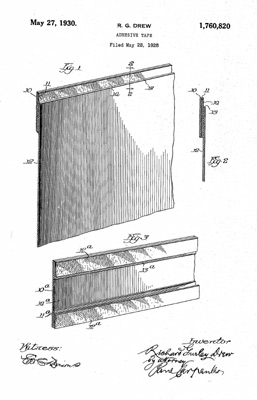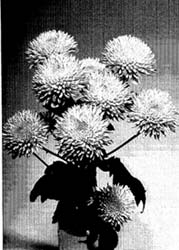Question from Shelly M.:
I was out to dinner this weekend and my friend had a Sam Adam’s Oktoberfest with her dinner. I noticed it came in a pretty neat glass, and on the back was stamped a patent number. It was “D” and then some numbers. Did Sam Adams really patent a beer glass? And why does it have a ‘D’ at the front?
Yes, the Boston Beer Co the maker of Sam Adams did extensive research to design the perfect beer glass. They have received design patent D569489 for this glass. The D in front of the patent number signifies that the patent is not a utility patent as most patents are but a design patent. A design patent is a patent granted on the ornamental design of a functional item. A design patent does not apply to the workings of a product but only to its look and exterior. The term of the design patent is presently 14 years and they have no maintenance fees.
View the Beer Glass patent at the USPTO.
Do you have a question for The Invention Geek? Submit it here.


 Marion Donovan spent a large part of her childhood in a manufacturing plant run by her father and uncle who invented many things including an industrial lathe. This experience instilled Marion with an inventive spirit.
Marion Donovan spent a large part of her childhood in a manufacturing plant run by her father and uncle who invented many things including an industrial lathe. This experience instilled Marion with an inventive spirit.
 Can you imagine life without tape? How would we wrap presents, fix ripped papers and make duct tape dresses? Richard Drew invented the first masking tape in 1925.
Can you imagine life without tape? How would we wrap presents, fix ripped papers and make duct tape dresses? Richard Drew invented the first masking tape in 1925. Patent disputes do not just occur over drugs or electronics. In fact, even the pencil, a simple product used by millions everyday, was at one time part of a court battle.
Patent disputes do not just occur over drugs or electronics. In fact, even the pencil, a simple product used by millions everyday, was at one time part of a court battle. In 1930, the Plant Patent Act spurred by the work of Luther Burbank provided for the possibility of patent protection for asexually reproduced plants. In 1949, Plant Patent #1 was issued to Henry Bosenberg of New Brunswick, NJ, for a climbing rose. The United States Patent and Trademark Office grants a plant patent for any new or distinct variety of plant that is asexually reproduced except for a tuber propagated plant or a plant found in an uncultivated state. Asexual reproduction means that the plant must be able to reproduce by a method other than seeds such as budding, grafting or the rooting of the cuttings. The child plant therefore has the exact characteristics of the parent plant.
In 1930, the Plant Patent Act spurred by the work of Luther Burbank provided for the possibility of patent protection for asexually reproduced plants. In 1949, Plant Patent #1 was issued to Henry Bosenberg of New Brunswick, NJ, for a climbing rose. The United States Patent and Trademark Office grants a plant patent for any new or distinct variety of plant that is asexually reproduced except for a tuber propagated plant or a plant found in an uncultivated state. Asexual reproduction means that the plant must be able to reproduce by a method other than seeds such as budding, grafting or the rooting of the cuttings. The child plant therefore has the exact characteristics of the parent plant.